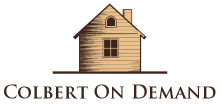Martha from down the street is shrieking at you again. She’s a part of the Home Owners Association that you pay too much for each month. And it’s her self-appointed duty to act as a gulag officer.
Ah, the wondrous joys of homeownership.
This time it isn’t because your trashcans were three inches out of their ordinance zone on the street. It’s because of your wily trees that are in deep need of pruning. But where do you even start?
Here’s how to prune shrubs and trees to keep your foliage, and your cranky neighbors, at bay.
When’s the Best Time to Do It?
It’s a popular question to ask among house owners. And there’s a sort-of ubiquitous answer to any question of when’s the best time to do something. That answer is – – whenever there’s time.
There’s no exact science to it, but it should be based on preference and convenience. You shouldn’t go prune the shrubs in a thunderstorm. But whenever it’s a nice, not-too-hot day out.
Some gardeners have a seasonal schedule for the best time to prune trees and shrubs. This is typically based on when trees and other foliage grow or face harsh conditions. It also revolves around which climate is best to work in.
Some prefer the late winter, as it’s cool out and the shrubs need dead branch removal. Others prefer the summertime, as it’s the perfect time to prime the foliage for proper growth. Autumn is also favorable; there’s usually a brisk feel outside, and it prepares the bush for a cold winter.
Here’s How to Prune Shrubs and Trees
Pruning is done to promote healthy growth. Pruning trees and shrubs also lead to a more kempt lawn, heightening your home’s curb appeal.
You should actively thin out unproductive limbs. These are the droopy, sad branches and limbs that fall below the plant’s branching origin. They’re often dead or dying.
Branches that tangle among themselves compete for scarce resources. Untangle them by pruning them off, which will result in a greater intake of sunlight.
Depending on what you’re pruning, the direction of your cuts matter. If you’re pruning yard hedges, cutting the sides of the shrub will create a denser look. Cutting the top of it will entice the plant to grow upward.
Trees should, practically, grow upward. Prune their limbs to promote an upward-growth.
Pruning to promote health and appearance should be done with the proper wares. Your arsenal should consist of a light chainsaw, a long-reach pruner, some manual saws, and a pair of loppers. Each should be used per the job – trimming off a few branches doesn’t require the use of electrical tools.
Now You’re Pruning
If it weren’t for Martha, your trees wouldn’t be getting the love they deserve. They need pruning to promote healthy, appealing growth. Otherwise, they’ll do what they do best — grow unconditionally.
Pruning your shrubs and trees doesn’t need to be on a fixed schedule, but do it at your convenience. Depending on what you have in your yard, trim it appropriately and with the right tools.
Now that you know how to prune shrubs, want some more tips on keeping your lawn prim and proper? Check out other articles.


